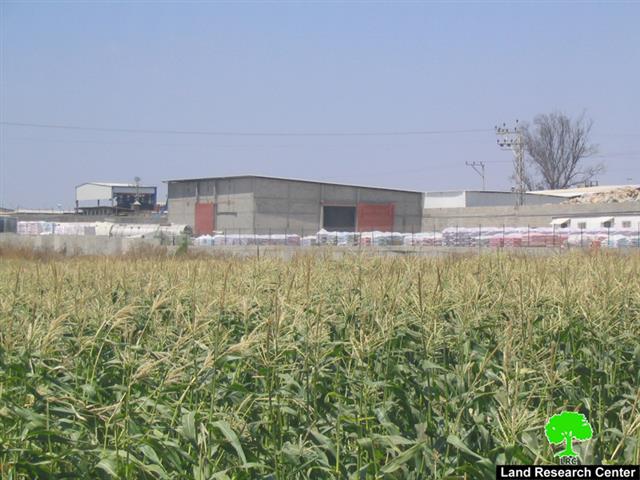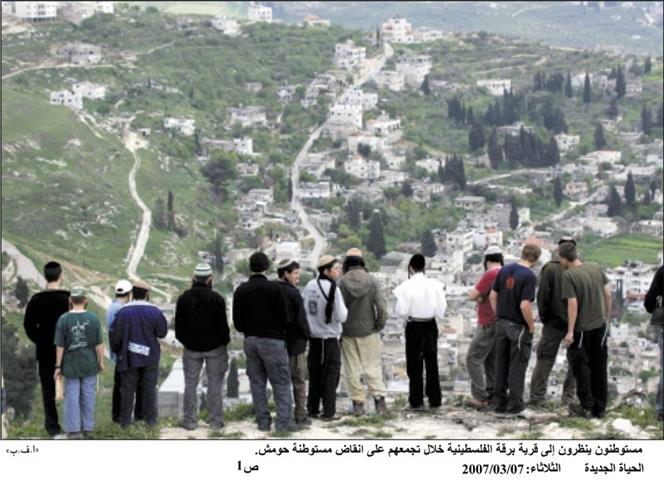(Photo 1:Some of the Israeli factories near agricultural fields in Tulkarem)
In the year 1985 Israeli occupation authorities established the first factory west of the city of Tulkarem inside the occupied lands of the West Bank. The factory was named Ghishori for Paints and Agricultural pesticides and it was established on a 22-dunum piece of land confiscated by the Israeli forces from the Abu Sham'a family of Tulkarem.
Seeing that as a precedent, colonists used the vicinity of the factory to establish a number of other factories taking advantage of a number of incentives including:
-
The close proximity of the area to the Green Line and other cities inside Israel (Natania City is only 12 kilometers away).
-
The availability of the unorganized cheap labor that does not enjoy workers' rights as in Israel.
-
The region does not operate under the Israeli Labor Law.
-
Tax exemptions for Israeli investors in that region.
As a result, a large number of factories were established, especially after the Oslo Accords in 1993. So far, there are 8 factories built on an area of 200 dunums which used to be the most fertile lands in the Governorate. To follow is a list of these factories:
1. The Ghishori for paints and agricultural pesticides. It employs 50 Palestinian workers.
2. A plastic factory that employs 16 Palestinian workers.
3. A carton factory that employs 20 Palestinian workers.
4. The Yamit factory for agricultural filters. It currently employs 70 Palestinian workers.
5. A filling gas containers factory which employs 50 Palestinians.
6. A textile factory that employs 30 Palestinian workers.
7. A wooden board factory that employs 20 Palestinians.
8. An electronic panel factory in which 15 Palestinians are currently working.
These factories have become the source of continuous nightmare to the surrounding Palestinian communities due to the environmental and health disasters it is producing on daily basis.
(Photo 3: More of the Israeli pollution-caused factories in Tulkarem)
Withheld Worker Rights
Palestinian workers in those areas work under the Jordanian Labor Laws issued in 1964 given the fact that they work outside the Green Line (in the Occupied Territories). As such, they earn less than the Israeli minimum wage in addition to the occurrence of exploitation cases by both Palestinian and Israeli worker dealers. Moreover, a sharp increase in the number of illness cases among those workers has been recorded lately. Such illnesses include cancer, lung infections and vision problems due to prolonged hours in these factories especially in the gas factory.
Environmental Pollution
Gas emissions and other pollutants produced by these factories have harmful effect on the air and the Palestinians living near these factories in 50 houses. The closest house to these factories is the house of Mr. Adeeb Mohammad Awad (52 years old) that is located only 24 meters away from Ghishori Factory. He is infected with eye and lung diseases in addition to skin cancer due to his exposure to the pollutants stemming from the factory.
In addition, statistics provided by the Palestinian Ministry of Health indicated that gas emissions from these factories has high levels of Carbon Monoxide and other poisonous particles that can cause breathing and skin problems. Another research paper prepared by a student from An Najah University indicated that 77% of the Palestinians living in the vicinity of the factories have visited specialty clinics due to pollutants emitted from the factories.
Moreover, the wastewater flowing from these factories is a major element contributing to the depletion of the fertile soil and plants. It's been reported that more than 300 dunums of fertile farming lands have been totally polluted as the salinity of the soil has increased dramatically due to the high salt content of these wastewater.
(Photo 4:On the other side of the Wall is an Israeli factory )
The Segregation Wall
The Segregation Wall that Israeli occupation forces erected along the Green Line in Tulkarem Governorate in 2002 has reinforced the hold the Israeli factories have in that region as it surrounded the factories from all four directions. Moreover, the Wall gave the occupation forces an 'excuse' to strangle the Palestinian population in that areas even further as illumination bombs and military patrols have been on the increase ever since the erection of the Wall. It is worth noting here that the targeted region used to witness continuous clashes between Palestinian resistance and Israeli occupation forces due to the region's proximity to the Green Line.
(Photo 5: The Segregation Wall annexes the industrial zone into Israel )
Colonists took advantage from the establishment of the Barrier as they started to pump wastewater through the water channels embedded in the Wall towards Palestinian villages nearby. Such action has led to the pollution of the fertile lands and an increase in diseases which led the Governorate of Tulkarem to submit an objection letter to the Red Cross and the Israeli DCO. In response, Israeli occupation authorities built a pool to collect the wastewater stemming from these factories. Yet, despite that the pollutants are still affecting the Palestinian population in its vicinity. Examples of medical cases include the following:
-
Mr. Yousef Al Sharshir, 43 years old, who lives near the Industrial Zone. He has cancer for more than a year now. As for his 11-member family, they are all infected with skin diseases, asthmas and vision problems.
-
Mr. Tayyem Abu Rabee', 35 year old, a farmer who was recently diagnosed with cancer as a result of the factory's wastewater that polluted his farm.
An Israeli Decision to Build New Industrial Zones
As part of the unilateral disengagement declared by the Sharon government, Israeli occupation authorities took a decision to establish 9 new industrial zones on the separation lines between the West Bank and Gaza Strip, on one hand, and Israeli, on the other hand, as to support the Israeli industries and economy. One of the possible sites is the area located between the village of Far'oun and the path of the Segregation Wall located south west of the city of Tulkarem. In case these Zones are established, huge environmental problems are expected to plague the West Bank and Gaza in addition to a widespread exploitation of Palestinian workers. See Map 1
Prepared by
The Land Research Center
LRC



















